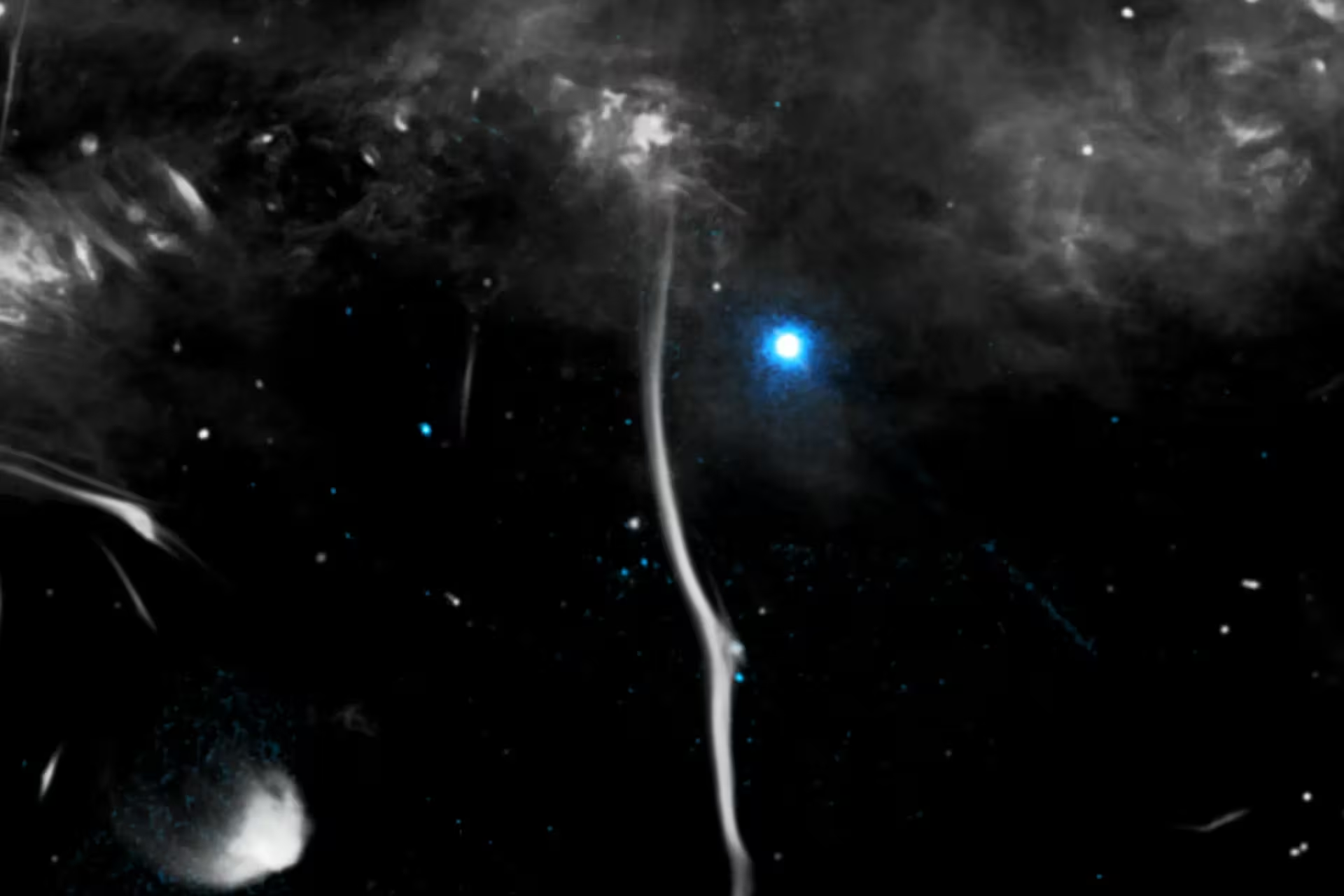4 Minutes
The Mysterious Anatomy of the Milky Way: Galactic Bones
Deep within the Milky Way, beyond the reach of ordinary telescopes, lie enigmatic structures known as "galactic bones." These vast, filamentary formations are made up of highly energized particles that trace the spiral arms and magnetic fields of our galaxy. Among these cosmic features is a particularly striking filament named G359.13142-0.20005, or more evocatively, "the Snake." Stretching nearly 230 light-years, the Snake not only stands out due to its brightness and length but, most recently, because astronomers have detected an unusual fracture along its structure.
What Are Galactic Bones?
Galactic bones are elongated, radio-bright filaments that help reveal the architecture of the Milky Way’s spiral form. As described by NASA, these filaments are composed of charged particles that spiral along magnetic field lines, generating distinctive radio emissions that can be detected with sensitive radio telescopes. The study of these bones provides scientists with valuable clues about our galaxy’s structure, dynamics, and the invisible magnetic scaffolding that holds it together.
The Snake: Investigating a Broken Filament
The Snake filament, in particular, drew scientific interest due to a visible discontinuity—a fracture—that set it apart from other known galactic bones. Early theories posited that the disruption might have resulted from an interaction with an undetected object. Now, a new study led by astronomers from Harvard University, published in the Monthly Notices of the Royal Astronomical Society, may have revealed the source of this cosmic break.
Pulsar Collision Theory
Research teams utilized a powerful array of astronomical observatories to probe this phenomenon. Data from NASA's Chandra X-ray Observatory, orbiting high above Earth, were combined with observations from two leading radio telescope systems: the MeerKAT array in South Africa and the Very Large Array (VLA) in New Mexico, USA. These facilities identified signatures consistent with a pulsar—a rapidly rotating neutron star—within the fractured region of the Snake filament.
Neutron stars, especially pulsars, are extraordinarily dense remnants created from the explosive deaths of massive stars, known as supernovae. Pulsars spin at remarkable rates and emit strong magnetic fields, giving rise to detectable radio waves that sweep across space like lighthouse beams. While too compact and distant to observe optically, their signals can be captured using radio astronomy techniques.

Unraveling the Collision: Speed and Impact
Based on data collected from the observatories, scientists estimate that the pulsar collided with the Snake at staggering speeds—ranging from 1.6 to 3.2 million kilometers per hour. This massive impact is believed to have distorted the magnetic field associated with the galactic bone, altering the filament’s radio signal and causing the visible fracture.
In NASA’s released image, the Snake is clearly visible, with a compact, luminous object appearing to interact mid-way along its length. This feature is likely the suspected neutron star responsible for the disruption.
The Broader Scientific Significance
The discovery of a fractured galactic bone, likely caused by a neutron star collision, opens new avenues for exploring the Milky Way’s dynamic and sometimes violent history. As astronomers continue to map and analyze other galactic filaments, these findings provide vital insight into the role that supernova remnants and compact stellar objects play in shaping the vast magnetic and structural landscape of our home galaxy.
Conclusion
The identification of a "broken bone" within the Milky Way, likely caused by a high-velocity pulsar, marks a significant step forward in our understanding of galactic evolution and the dramatic interactions that occur within our galaxy. By combining multi-wavelength observations and cutting-edge radio astronomy, researchers are unveiling the hidden skeleton of the Milky Way—an achievement that promises to advance both galactic science and our broader appreciation of the universe’s complex tapestry.


Comments